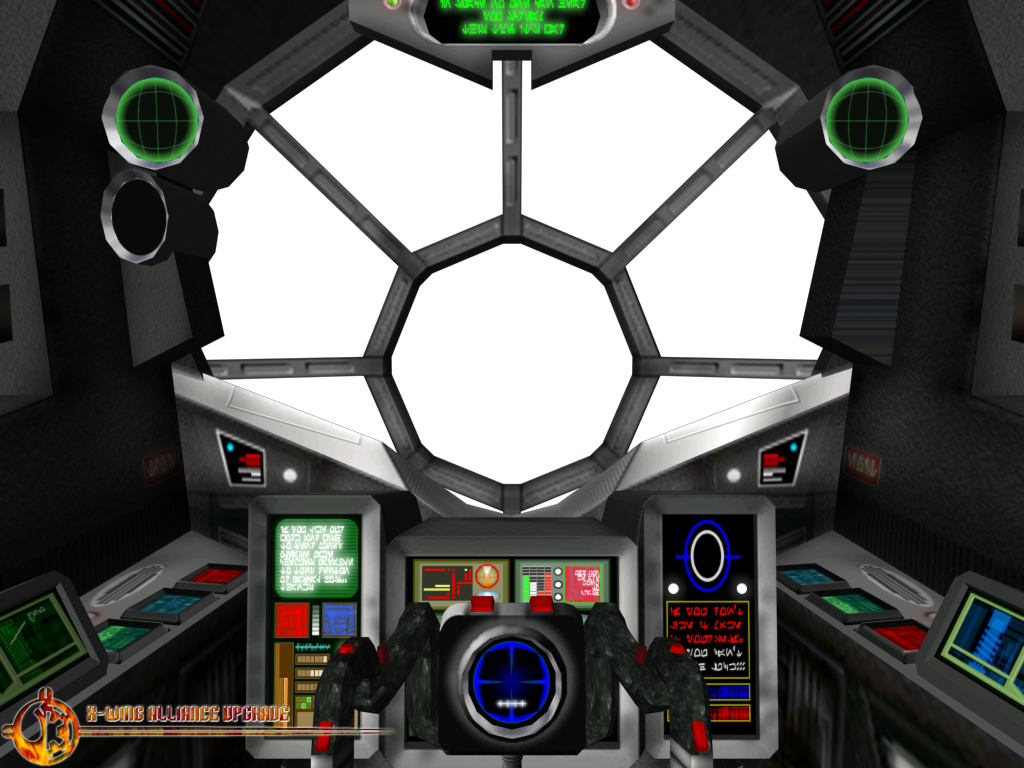Tie Fighter Cockpit View
Posted By admin On 10.10.19
FAQA wallpaper or background (also known as a desktop wallpaper, desktop background, desktop picture or desktop image on computers) is a digital image (photo, drawing etc.) used as a decorative background of a graphical user interface on the screen of a computer, mobile communications device or other electronic device. On a computer it is usually for the desktop, while on a mobile phone it is usually the background for the 'home' or 'idle' screen. Though most devices come with a default picture, users can usually change it to custom files of their choosing.A mobile wallpaper is a computer wallpaper sized to fit a mobile device such as a mobile phone, personal digital assistant or digital audio player. The height is often greater than or equal to the width.

Wallpapers can typically be downloaded at no cost from various websites for modern phones (such as those running Android, iOS, or Windows Phone operating systems). Modern smartphones allow users to use photos from the web; or photographs captured with a phone's camera can be set as a wallpaper.Wallpaper images are usually copyrighted as many other digital images found on the Internet.
Tie Fighter Cockpit View Full
Contents Characteristics DesignInterior of a series.TIE series starfighters shared a general design form of a roughly spherical or cylindrical cockpit pod attached to a set of solar panels, with their overall shape resembling a bow tie apparel (thus acting as a partial namesake). The cockpit and panels could be supplemented by other modules for ordnance or other functions. Their overall design bore a large resemblance to the eye, which led to several members of the Rebel Alliance, including those of, to give them nicknames relating to eyes (such as 'eyeball' for, 'squints' for, 'dupes' for, and 'brights' for the series of starfighters, respectively). This design form carried over to the non-starfighter products, with the standard cockpit module used in the center of a land or sea vessel.The cockpit of a TIE was neither spacious nor luxurious, even when compared to other starfighters.
The TIE Fighter size is probably one of the most fluid in all of Star Wars. This is due to several issues including filming models that had relatively large pilots, while the full-size cockpits made the pilots seem much smaller. Close-up views of the cockpit balls of a standard TIE fighter and a TIE X1. The laser cannons are the twin apertures immediately beneath the main viewport. The cannons on the X1 end in orange structures which were used on all the fighters based at the first Death Star. Have a look inside this tie fighter and see if you can spot all the awesomeness in this picture. It is things like this that make Star Wars worth imagining. Beyond every star and even behind every button of this tie fighter lies a secret it seems, and we’ll keep wondering about it until we get an answer.
A TIE fighter was designed with the bare minimum a ship needed to function, being essentially nothing more than a cockpit with weapons on the front and an engine in the rear. Format without losing data. This simplicity in design made them both quick and inexpensive to build and replace.TechnologyAThe TIE series derived its name from the, which was unveiled to the public by in. Of TIE series starfighters may have been tested as early as. TIE fighters were used on Imperial, such as the as early as, one week after the Empire was formed.
Jet Fighter Cockpit View
At first, the launching systems often suffered from failures, and had to undergo several redesigns. Because of the nature of their engines, the TIE series also had a distinct sound uttered whenever they flew about.All TIE series starfighters had two or more outlets, linked to a solar ionization reactor and solar array wings.Except for advanced models, TIE series vessels were not generally equipped with, but they could be added as an option. Early TIE models tended to suffer noticeably in sublight performance if given this upgrade, due to the added mass of the hyperdrive and systems. Apparently not all TIEs were equipped with a missile lock warning sensor to warn a pilot of an enemy missile lock, though many were.Combat capabilitiesdisabling a.Ships in the TIE series were usually armed with one or more, two being the standard. More advanced fighters were equipped with a variety of warhead launchers, and the and could be fitted with a small-scale.Very few TIE starfighters were equipped with combat, though they were included on the Avenger and Defender and could be retrofitted onto most TIE types. This lack of shielding was a factor toward the TIEs extreme speed.
Retrofitting of this type was fairly common in the era, as ships and manpower became more valuable to forces.In, during the start of the, the was produced by Sienar for the. Like its predecessors, the Aleph had a ball-shaped cockpit pod which was larger than that of a standard TIE variant. However, it was designed as a two-seater complete with an and more weapons.The continued to utilize TIE designs, such as the used around.Behind the scenesThough the term 'TIE Fighter' was coined because thought they looked like bow ties, the is a real-life type of spacecraft propulsion, and publicity surrounding the launch of the spacecraft, particularly the shuttle, likened its ion thruster to the propulsion systems of a TIE Fighter.